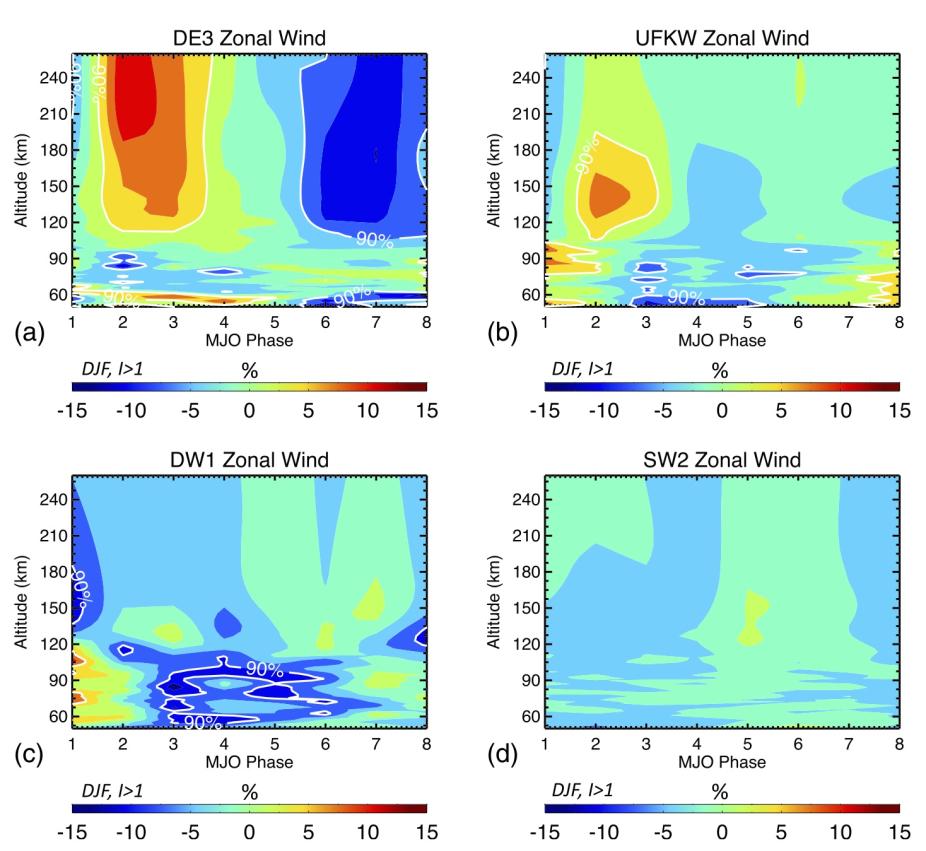Publication Name: Journal of Geophysical Research: Space Physics; First HAO Author's Name: Federico Gasperini
Over the past two decades mounting evidence demonstrated that terrestrial weather significantly influences the dynamics and mean state of the thermosphere. While important progress has been made in understanding how this coupling occurs on hourly to daily time scales, large uncertainty still exists on this effect around intraseasonal (∼30–90 days) time scales. In this work, analyses of Thermosphere Ionosphere Mesosphere Energetics Dynamics‐Sounding of the Atmosphere using Broadband Emission Radiometry temperatures near 110 km and Gravity field and steady‐state Ocean Circulation Explorer cross‐track winds near 260 km reveal prominent intraseasonal oscillations in the equatorial (±15°) zonal mean lower and middle thermosphere. Similar intraseasonal oscillations are found in the amplitudes of the diurnal eastward propagating tide with Zonal Wavenumber 3 (DE3) and the quasi‐3‐day ultrafast Kelvin wave, two prominent ultrafast tropical waves (UFTWs) excited by deep tropical tropospheric convection.

Altitude (50-260 km) versus MJO phase depiction of DE3 (a), UFKW (b), DW1 (c), and SW2 (d) low-latitude (±40°) zonal wind amplitudes obtained applying a composite analysis method to three hourly 1980-2017 SD/WACCM-X output. Strong MJO-phase dependency in DE3 and UFKW amplitudes exists above ∼120 km. DE3 and UFKW exhibit larger amplitudes during MJO P2-P3 and smaller amplitudes during MJO P6-P8. These results suggest that the MJO may play an important role in coupling tropical tropospheric ISO to the thermosphere.
Numerical simulations from the Specified‐Dynamics Whole Atmosphere Community Climate Model eXtended demonstrate a significant connection between these UFTW and the Madden‐Julian Oscillation (MJO). Compared to the boreal winter mean state, thermospheric UFTW amplitudes are larger (+5 to +12%) during MJO Phases 2–3 and smaller (−3% to −12%) during MJO Phases 6–8. Significant variations are also found with respect to the phase of the mesospheric semiannual oscillation (MSAO) and stratospheric quasi‐biannual oscillation (SQBO), with larger (±12–16%) thermospheric amplitudes during westward MSAO/SQBO phase and smaller (±3–6%) amplitudes during eastward MSAO/SQBO phase, in accordance with theoretical interpretations. This study suggests that UFTW may play a large role in coupling tropospheric intraseasonal variability to the thermosphere, raising important questions including implications for the whole atmosphere system.